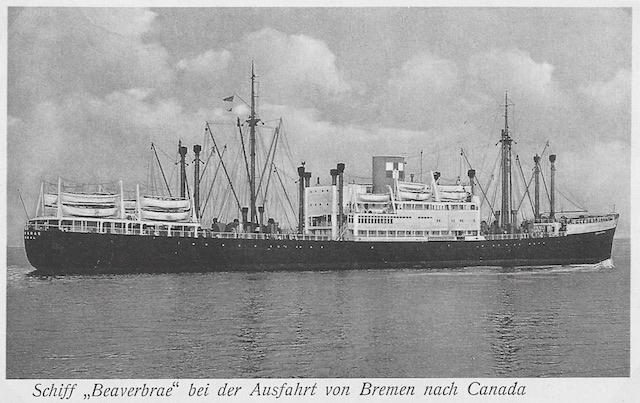Yesterday, I mentioned that Canadian Pacific owned twenty ocean liners that carried the name “empress.” But is also owned a confusing number of other ocean liners, including the duchess series, the mont series, the -n series (ships whose names ended with an “n,” and usually “ian”), the beaver series, and a few that didn’t seem to be part of a series. Even more confusing, CP often changed ship names; for example, two duchesses were upgraded to empresses and one empress was downgraded to a mont. One ship was registered by five different names in CP service, though it only sailed under three of them.
Fortunately, a book published in December 2022 helps clear up the confusion. Canadian Pacific Ships by Ian Collard includes about 50 pages of text with black-and-white photos, 24 pages of color photos, and more than 80 pages listing and describing what is apparently every ship ever owned by Canadian Pacific, including ships working the Great Lakes and British Columbia coast, riverboats, cargo ships, and more.
The list indicates that Canadian Pacific owned a total of 60 ocean liners that were primarily in passenger service. Thirty-one of these were built for the Canadian Pacific and the remainder were acquired from other companies. (Some may have been leased but are included here.) The above list is in the order in which the ships were launched, which isn’t the same as when the CP acquired them. I’ve tried to include the date each ship made its maiden voyage for CP, but the exact dates are not always available.
Empress ships, as I’ve described in the last few days, were first-, second-, and third-class ships. The duchesses, monts, and -ns were cabin-class ships, meaning they didn’t have first-class accommodations but did have second- (cabin-) class plus third-class or steerage. The beaver ships (as well as two monts and the Miniota) were primarily cargo ships, but some had room for around a dozen passengers. When a ship was the second or third of its name, I followed Collard by including a (2) or (3) after the name.
CP also owned four other beaver ships whose lengths, beams, and other specifications are exactly the same as three of the beaver ships that had space for 12 passengers, but Collard doesn’t indicate that these four carried passengers. His list isn’t perfect, so I included them just in case they also carried passengers from time to time. However, I left out dozens of other cargo ships that appear to never have carried passengers.
Curiously, the beaver ships were used in the Atlantic. When some were transferred to the Pacific, they were renamed maple ships, so Beaverdell became Mapledell and Beavercove became Maplecove. Of course, beavers and maple leaves are both important symbols of Canada.

The Beaverbrae operating as a Canadian Pacific refugee ship. Click image for a larger view.
One beaver ship, the Beaverbrae (2), was a special case, having served at various times of its life as a cargo ship, an ocean liner, and a cruise ship. It was originally built in 1938 as the cargo ship Huascaran to operate between Germany and South America for Hamburg America. In addition to cargo, it had room for 58 passengers. However, it only made one round-trip before being taken over by the German government for war service. Near the end of the war it was captured by the Allies and sold to Canadian Pacific in 1947.
With the support of the Canadian government and the Canadian Christian Council for the Resettlement of Refugees (an association of Catholics, Lutherans, Mennonites, and Baptists), the ship was outfitted to carry 74 passengers in cabins and 699 in dorms (steerage). Between 1948 and 1954, it made 51 (some sources say 52) crossings from Germany to Canada carrying refugees, mostly from Germany but a few from Czechoslovakia, and other eastern European countries. Some were fleeing communism but most had just lost their homes and jobs in the war.
A total of 33,259 passengers were carried across the sea, nearly all becoming Canadian citizens. Eastbound, the ship carried cargo and then returned with more refugees. The ship became so important as a part of their new lives that families of the passengers held a Beaverbrae reunion in 2015.
When the demand for this service died down in 1954, CP sold the ship to an Italian company. The company removed the cargo masts and converted it into a sleek ocean liner, the Aurelia, for service between Italy and Australia. It was sold in 1970 to a cruise ship operator who renamed it Romanza, while in 1991 another cruise ship operator bought it and renamed it Romantica. However, it was damaged by a fire in 1997 and scrapped the following year. Few of Canadian Pacific’s ships had such a long and diverse history.
